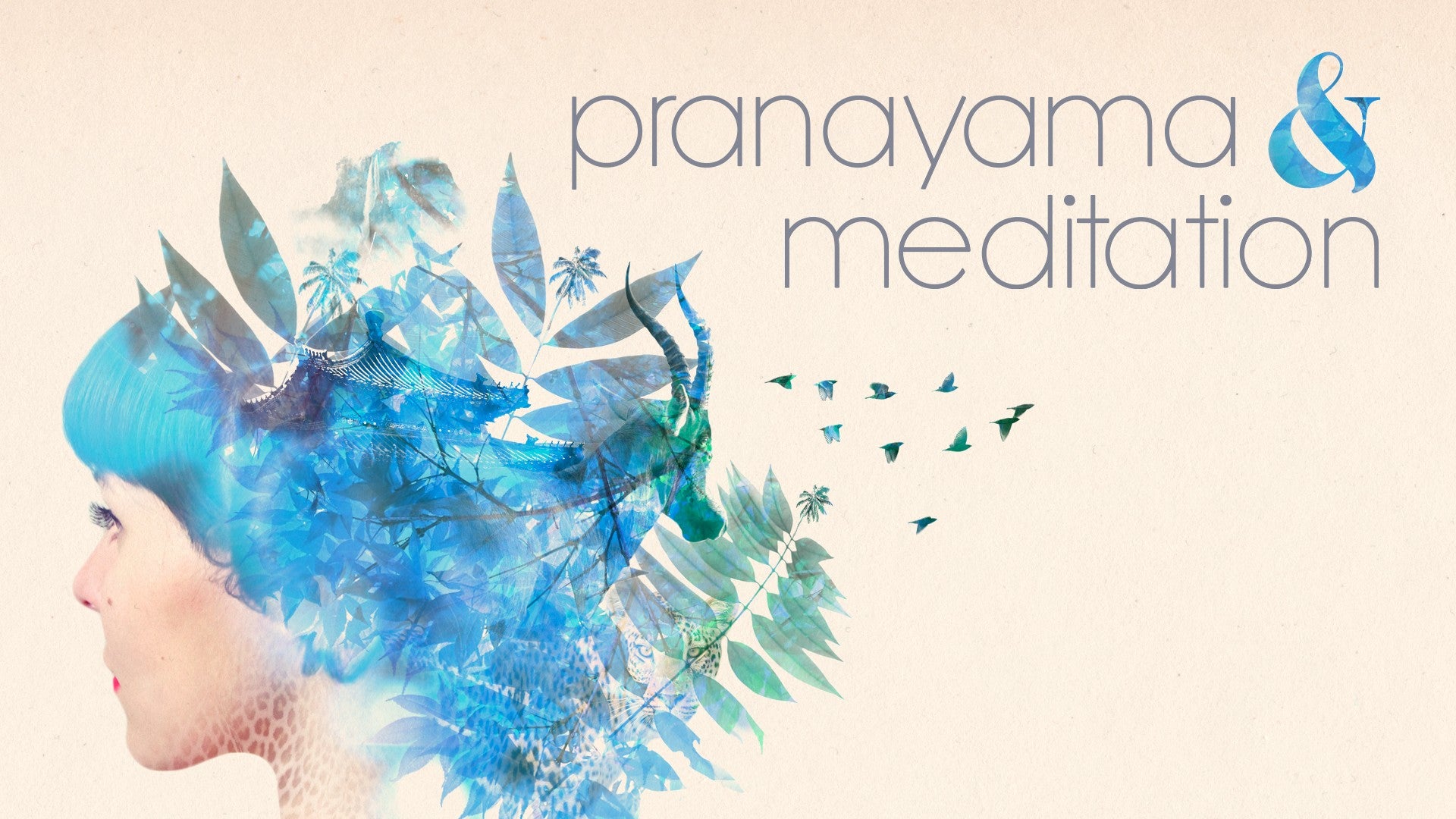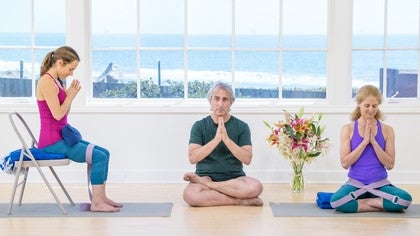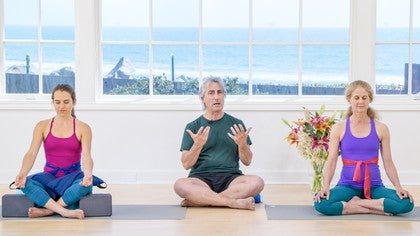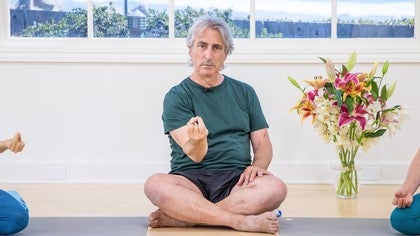Description
About This Video
Transcript
Read Full Transcript
Hi, we're here with Ilana and Betsy, and we're going to learn one of the most basic of the pranayama breathing practices, which is called ujjayi. It's usually translated as the conqueror's breath. Jaya means the conqueror. And one of the reasons why it's given that name supposedly is that the chest gets puffed up and it's said like a proud conqueror. But there's something that's very characteristic of ujjayi that we need to learn about first, and it's called the ajapa mantra. It has other names for it. Ajapa means to be whispered or to be whispered. Let's put it that way.
It's said in the traditional practice that a spoken, that a whispered mantra is 100 times more effective than a spoken mantra, and that a mantra that's imagined is 100 times more effective than a mantra that's whispered. And this mantra is actually the sound of your own breathing. You say this mantra with every breath you take from the moment you're born to the moment you die. And the yogis hear two syllables on the inhales and exhales. On the inhale they hear a sort of a sibilant S sound, which is interpreted as the syllable SA. And on the exhalation they hear an aspirate sound as an HA. And there's two ways you can arrange these syllables, obviously. You can look at it as saying saham or soham, which means in Sanskrit, I am it.
And that indicates that the embodied self, the jivatman, is equivalent to the great self, the paramatman. And what they're saying about this is that the breath is the link between the two, and the way for the small self to integrate itself with the great self. The other way to arrange the syllables is hamsa. Now usually that's interpreted as a swan, but in fact it's actually a goose. And the goose is, the bird is a very powerful symbol also in yoga, especially the goose which is at home on land, on water, and in the air. And birds, of course, are messengers between the mundane world and the spiritual.
So this is the symbolic interpretation of the mantra. You can call it the ajapa mantra or the hamsa mantra. But there's also a very practical application of the mantra as well, and that is, first of all, when you make this sound of the mantra, you automatically slow the breathing down, which is very useful for this practice. And you also, the sound also helps you to engage your awareness in the breath. And then one way that we can amplify the sound is to use earplugs. So we have a pair here for our friend Betsy, and she's going to take the earplugs as soon as she comes back to Earth.
And you take the earplug between your index and middle finger and roll it up, and then reach over the top of your head and grab the top of your pinna or your ear, your outer ear, and then put the rolled up plug in. And then just let the plug will expand in your ear canal as you let it go. And again, this is very useful to be able to hear the subtle currents of the breath as you're inhaling and exhaling. And I highly recommend using these not only for breathing but for shavasana as well. It really helps you to stay focused on the breath for the entire practice.
Now, to begin the ajapa mantra or the hamsa mantra, all you need to do is take an inhalation through your nostrils and then exhale out through your mouth. Passing the breath over the back of your throat like this. So if my helpers would do that, if they would inhale through the nostrils, and then open your mouth a little bit and pass the breath out across the back of your throat, and just get the feel where the breath is crossing the throat. Do that a couple more times if you don't mind. Now, you want to make sure that when you're doing this mantra that you don't broadcast it across the room.
All you need to do is amplify the natural sound of your breath a little bit so that it's slightly more audible. Very good, very good, very good. Now, the mantra is created by inhaling and exhaling through the nostrils and passing the breath over the same area at the back of the throat that you were just doing when you were breathing out through the mouth. Let me try to make that sound and demonstrate what that might be like. So I'll inhale, and now I'll exhale.
Clear? What you want to hear when you're doing that sound is that it wants to be very, very smooth and even from beginning to end. So it's very important not to strain near the end of the in-breath or the out-breath. This helps you to moderate the flow of breath through your nostrils. Let's try a couple of rounds of that just on your own. We won't be able to hear it, of course, but...
You have to be very careful when you inhale that you don't raise your shoulders up towards your ears. You want your shoulders to drop down away from the ears, make the backs of the elbows very heavy. When you come to the end of the breath, the exhalation, just pause a little bit again, take a little rest. It might be necessary at first for you to take a few normal exhalations between each ujjayi breath or a japa breath. Very well done. Take one more inhale, one more exhale, go back to everyday breathing.
This is called a japa mantra, aamsa mantra, and it is the characteristic sound that you make with your breath for the breathing exercise called the ujjayi pranayama. This sound is also used for other pranayamas that do not use the fingertips on your nostrils. But when you switch to digital pranayama, which we'll show in a little while, then you don't need to make this sound in the back of your throat. A japa mantra. Thank you.






You need to be a subscriber to post a comment.
Please Log In or Create an Account to start your free trial.